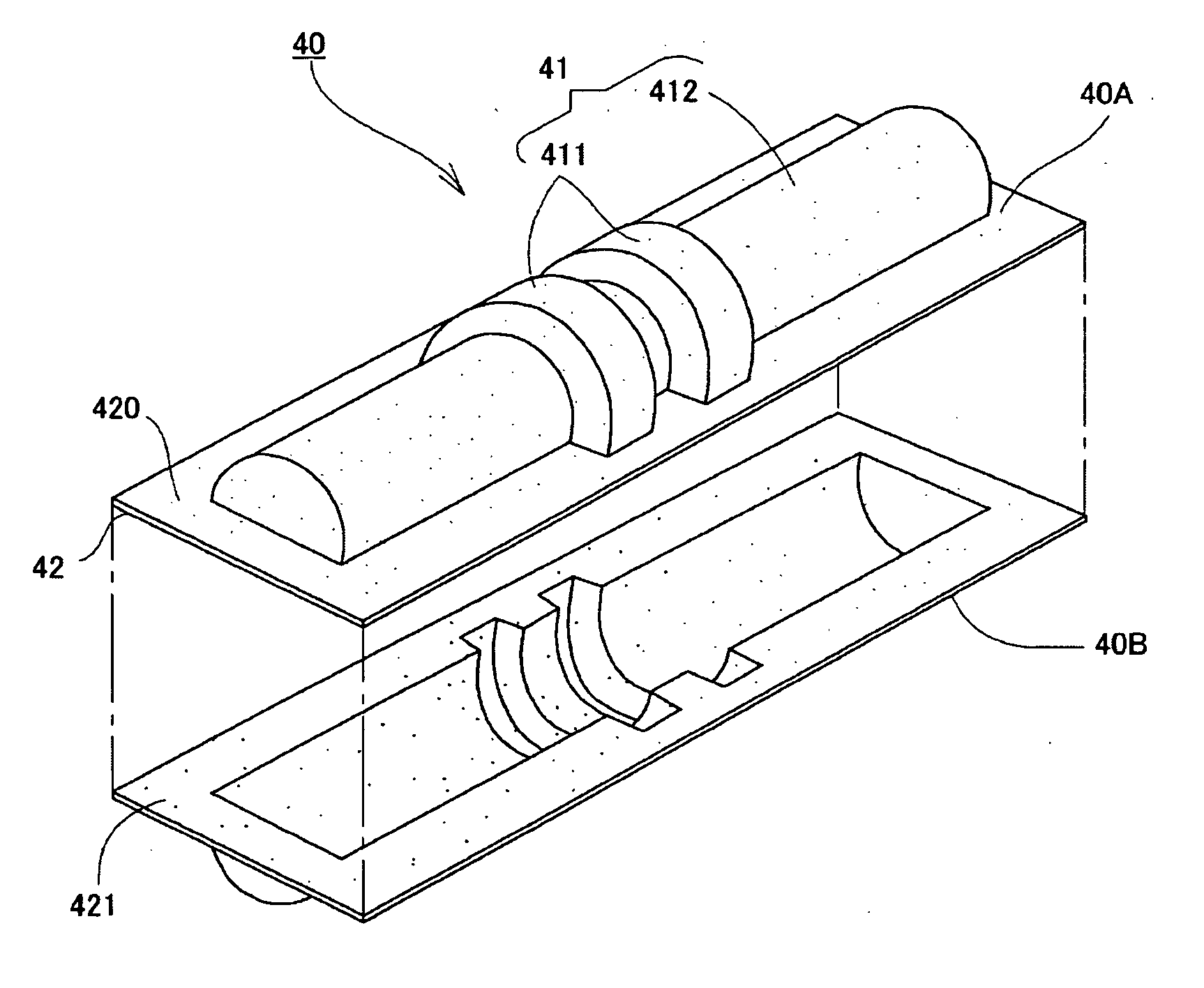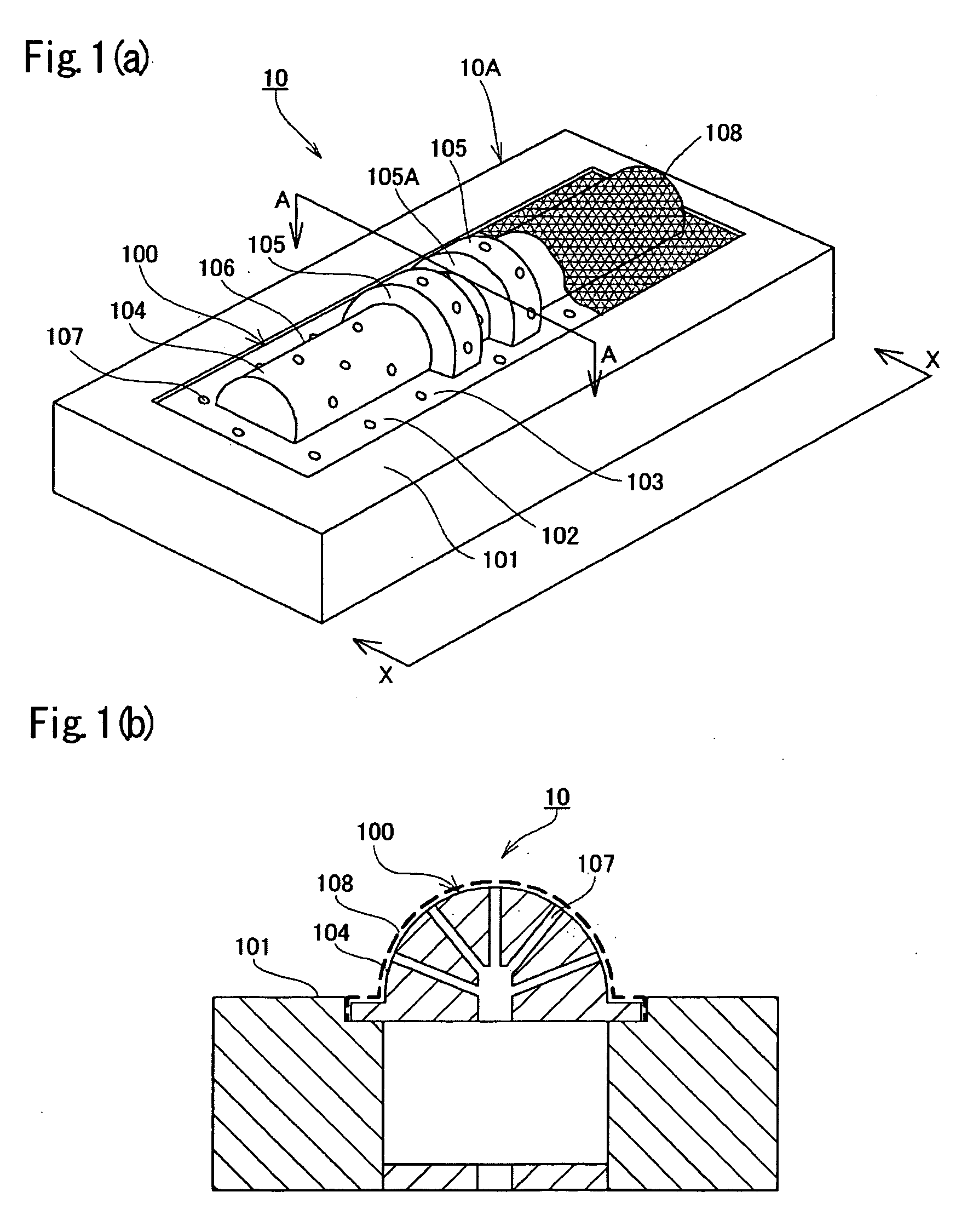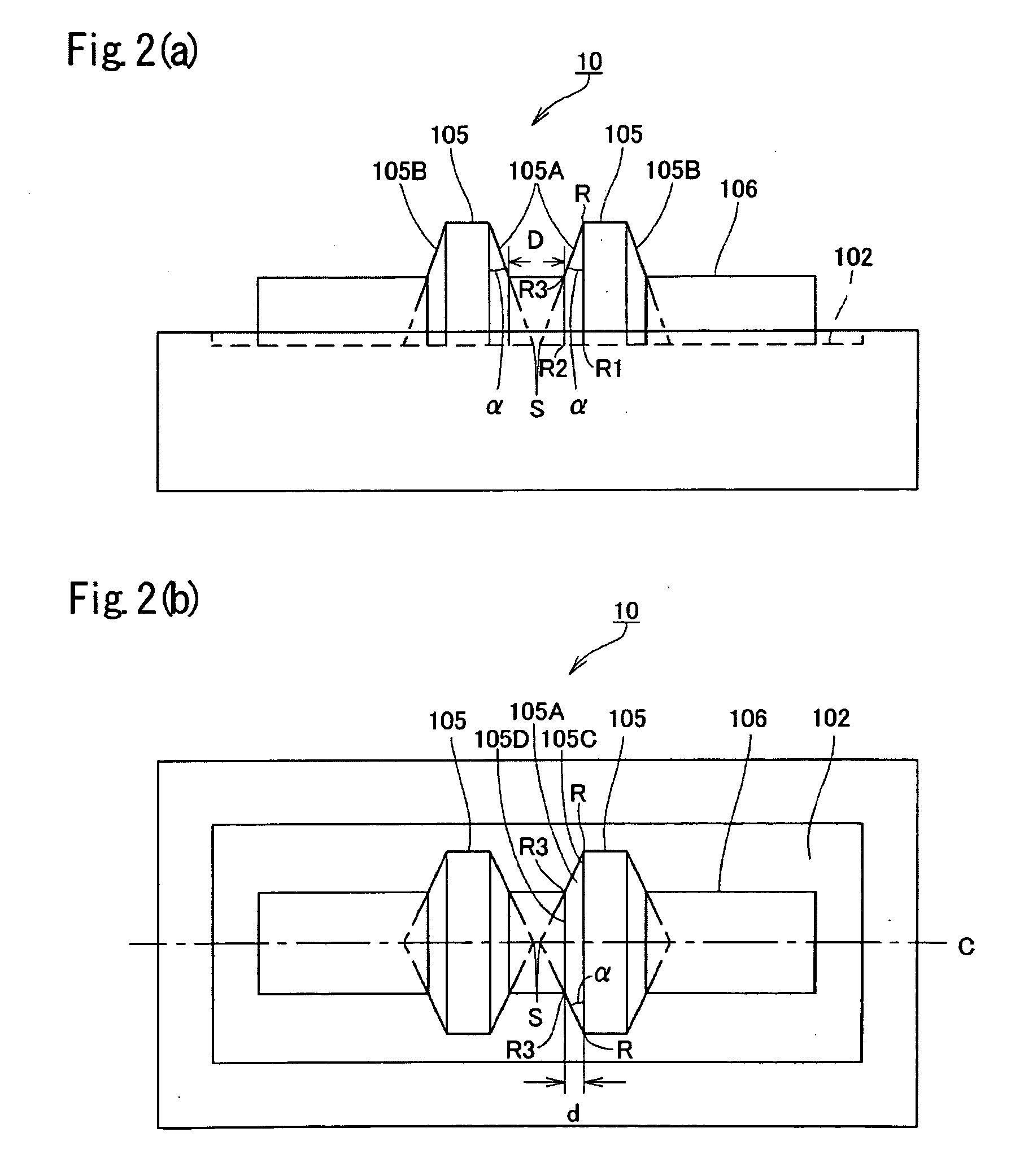Papermaking mold and fiber molded
a papermaking mold and fiber molded technology, applied in the field of papermaking molds and fiber molded articles, can solve the problems of becoming more difficult to supply raw material slurry and difficult to produce fiber molded articles with closely spaced plate-like projections
- Summary
- Abstract
- Description
- Claims
- Application Information
AI Technical Summary
Benefits of technology
Problems solved by technology
Method used
Image
Examples
example 1
[0168]A fiber mat as a fiber molded article precursor having two plate-like projections the facing inner sides thereof were formed of a part of a circular conical surface was produced using a papermaking mold shown in FIG. 30.
(1) Material
[0169]Organic fiber (recycled newspaper), inorganic fiber (carbon fiber), inorganic powder (graphite powder), thermosetting resin (phenol resin), and thermoexpandable particles were blended at a ratio of 4:4:76:12:4 by mass and dispersed in water to prepare a slurry having a solids content of about 3% by mass.
(2) Papermaking Mold
[0170]Material of mold main body: aluminum alloy
Main dimensions of papermaking mold:
L=288.5 mm; W1=13 mm; W2=9 mm; D=3 mm; A1=32.4 mm; A2=32.4 mm; A3=20 mm; d1=0.65 mm; d2=0.65 mm; α=3°
Wire: stainless wire; wire diameter=0.19 mm; #40 mesh
(3) Dewatering Condition
[0171]Dewatering system: suction by a waterproof vacuum cleaner
Dewatering time: 60 seconds
Water content after dewatering: 30-80%
PUM
| Property | Measurement | Unit |
|---|---|---|
| distance | aaaaa | aaaaa |
| thickness | aaaaa | aaaaa |
| thickness | aaaaa | aaaaa |
Abstract
Description
Claims
Application Information
 Login to view more
Login to view more - R&D Engineer
- R&D Manager
- IP Professional
- Industry Leading Data Capabilities
- Powerful AI technology
- Patent DNA Extraction
Browse by: Latest US Patents, China's latest patents, Technical Efficacy Thesaurus, Application Domain, Technology Topic.
© 2024 PatSnap. All rights reserved.Legal|Privacy policy|Modern Slavery Act Transparency Statement|Sitemap



